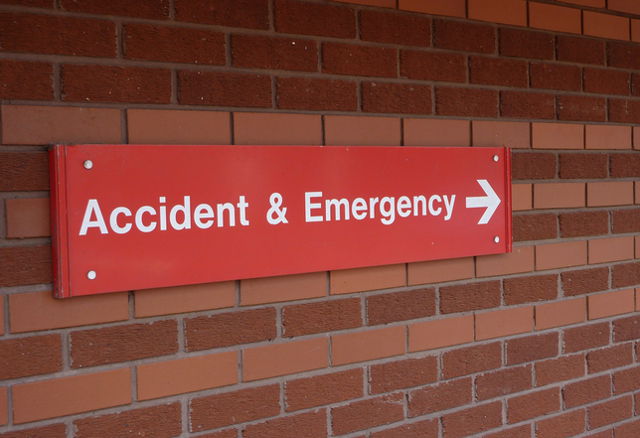This in from the CQC, in their own words. Ed
A national Accident and Emergency survey shows some encouraging results with almost eight out of 10 respondents saying their overall experience was good rating it seven or more out of ten and only three per cent of patients saying the doctor or nurse did not listen to what they had to say.
The Care Quality Commission (CQC) today (2 December) publishes results from the fifth accident and emergency (A&E) survey which almost 40,000 people took part in.
Full details about the Isle of Wight can be found on the CQC Website.
The national findings
A&E is one of the eight core services that CQC inspects and rates in acute hospitals, and patients’ experiences of care are a key aspect in determining these ratings. The national findings are presented under the questions inspectors ask about A&E departments: are they safe, caring, effective and responsive to people’s needs.
The findings demonstrate that departments are largely caring, however, more work needs to be done so that services are safer, are more effective and are more responsive to people’s needs.
Caring: Most of the questions (22 out of 35) relate to ‘caring’. The results are encouraging as 79 per cent of patients reported that they were treated with respect and dignity all of the time and 75 per cent ‘definitely’ had confidence and trust in the doctors and nurses examining them. Eighty six per cent of patients said staff explained the purpose of the medication in a way they were able to understand, Just over four in 10 (41 per cent) said the side effects of their medicine were not explained to them or they were not told when they could resume normal activities (42 per cent).
Safe: Forty per cent of patients waited less than 15 minutes to speak to a doctor or nurse when they first arrived, with almost three quarters (73 per cent) waiting less than one hour to be examined by a doctor or nurse. Around four in 10 patients (41 per cent) arrived at A&E in an ambulance. Of these, around one in 10 patients (11 per cent) said they waited over 30 minutes for their care to be handed over to the A&E staff; 5 per cent experienced waiting times of over an hour. The large majority (94 per cent) of patients did not feel threatened by other patients or visitors, but 2 per cent did.
Effective: Almost eight out of ten patients (79 per cent) said they got their pain relief medication within 30 minutes, however 13 per cent of people who requested pain relief medication waited for more than 30 minutes. While 63 per cent of patients thought that staff did everything to control their pain, 13 per said that staff did not do enough.
Responsive: Two thirds (66 per cent) of patients said that their visit to the A&E department lasted less than four hours. Most patients (82 per cent) reported having enough privacy when being examined or treated. However, the figure was much lower (53 per cent) when asked about discussing their condition with the receptionist.
Better results despite increased pressures
Commenting on the findings, Professor Sir Mike Richards, Chief Inspector of Hospitals, said:
“Overall the results of this survey are encouraging, with better results in 2014 than in 2012 despite the known increase in pressures on A&E departments.
“However, we do see significant variations between trusts. This highlights the need for all trusts to review their own results and to take action where necessary. The findings are set out in the report according to the same key questions as we use for our inspections. This will assist us in making judgments about the quality of individual A&E services.”
Further results reveal over half (51 per cent) of patients between the ages of 76-85 said that their home and family circumstances were not always taken into account as part of discharge planning.
Nationally, 22 per cent of patients did not feel staff helped to reassure them if they were feeling distressed while in A&E. Almost one third of people (33 per cent) with a mental health condition and 31 per cent who had a learning disability, said that A&E staff did not help to reassure them.
Twelve trusts achieved ‘better than expected’ results for 7 or more (20 per cent) of the 35 questions in the survey with a score. For the 2014 A&E survey, Dorset County Hospital NHS Foundation Trust, Salisbury NHS Foundation Trust and Taunton and Somerset NHS Foundation Trust have the highest numbers of ‘better than expected’ results of all trusts.
Image: lydiashiningbrightly under CC BY 2.0





